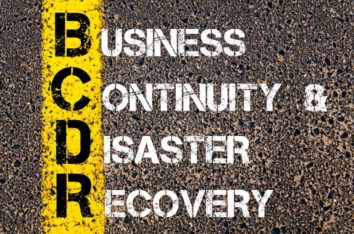Cloud Technology Insights
In our last post we began discussing cloud migration strategies and how to determine whether to migrate a legacy software application, or to replace it with a new SaaS offering.
Fortunately, there is a proven methodology to help you make that determination -- application rationalization. Here are the 7 steps of the rationalization process that can provide the information to help choose between migrating your legacy app or jettisoning it in favor of a SaaS alternative.
7 Step Application Rationalization Process:
- Map out your software portfolio
Gather data throughout the organization to build a well-defined, complete, and accurate inventory of applications. - Align each app with its business process and location
This mapping exercise will expose redundancies and identify opportunities for consolidation. - Determine the true cost of each application
This goes beyond the purchase or initial licensing cost of each app. It includes such costs as infrastructure and operations expenses, license renewals, licensed software support, maintenance and upgrading. - Align cost and business value
Break down the application costs by the business functions they support. - Analyze the technical and functional quality of each application
How much business value are you getting from each proprietary app? Are they performing effectively and cost-efficiently? How well is each application meeting the needs of a specific business process at a specific location? Functional quality includes factors such as ease-of-use, data currency, integration, and criticality and fit of an application to the business process. Also, determine how well each application meets technical best practices for reliability, scalability, interface complexity, data integrity, and support risk. - Create a target landscape and road map
Create a plan to consolidate and simplify your software portfolio to reduce redundancies, improve effectiveness, and minimize support costs. - Develop the business case
Develop a business case to demonstrate the business and financial value of transforming the software portfolio to gain buy-in from the rest of the organization. The business case shows the impact on efficiency and effectiveness of business processes as well as the time it will take to break even on the initiative cost.
Done correctly, application rationalization will enable you to streamline and modernize your current software portfolio in anticipation of cloud migration. It can also reveal what premise-based apps must be migrated to avoid process or business disruption and what apps potentially can be replaced by SaaS solutions to help minimize migration headaches and ensure more efficient operation in the cloud.
To that end, there are a number of automated migration assistance applications available to help with the transition. For example, the Azure Websites Migration Assistant from Microsoft is designed to ease migration of the popular IIS server application to the cloud, highlighting any elements which cannot be migrated or are unsupported on the platform.
Answering the six questions posed in our previous article (6 Questions to Ask Yourself in Developing a Cloud-Migration Strategy) and utilizing application rationalization will go a long way in taking the guesswork out of cloud migration and determining what apps you need to take with you and what you can obtain in the cloud.
For those who are contemplating a move to the cloud, our eBook titled A Guide to Adopting Cloud Computing for IT Leaders may be of interest. Of course, you may always reach out to Boston Data Group for a personalized discussion about the economics of migrating your IT infrastructure to the cloud.



